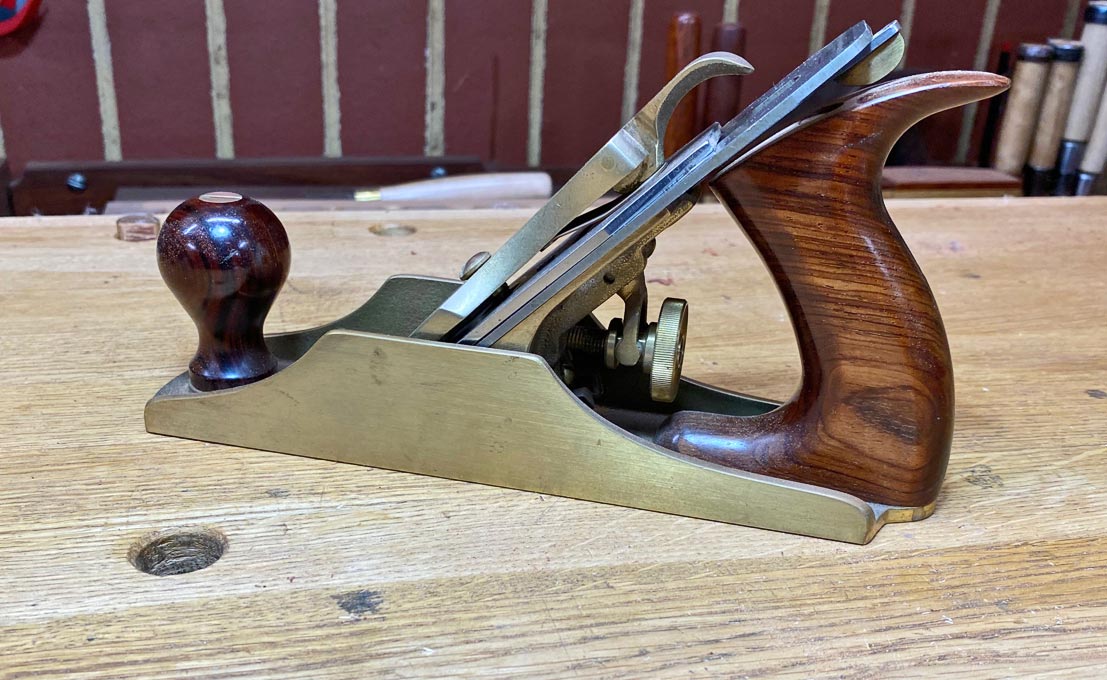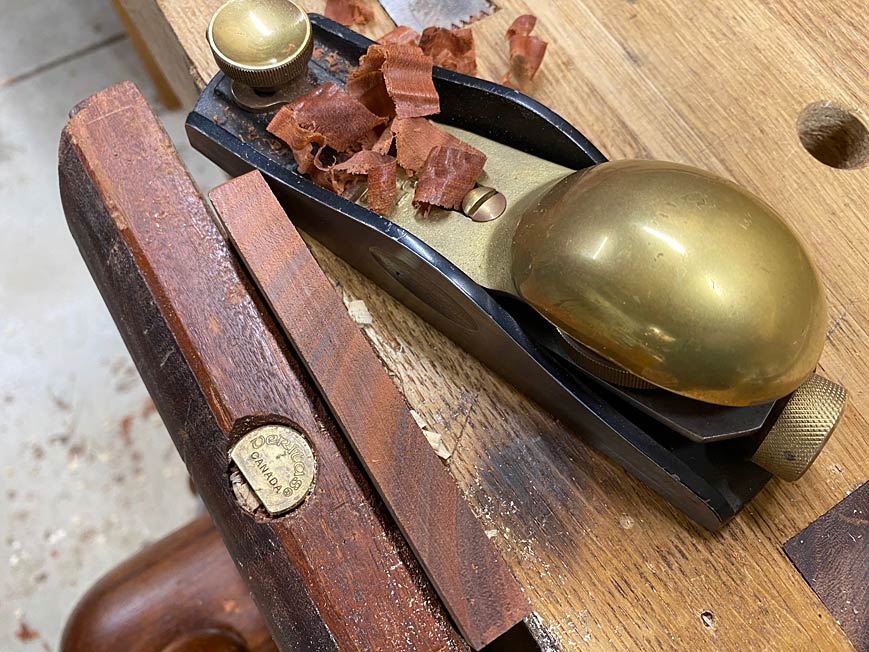If you're planing abrasive woods, you'll have problems with nicking. V11 is less nick resistant than O1 at same hardness, and O1 is probably slightly less nick resistant than water hardening steel, but hardness is a key factor.
If you're not noticing nicking in V11, it may be because it's not a tough steel and it's relatively high hardness, and whatever comes out as nicks just leaves without leaving behind a fanned out deflection.
Interestingly, yahoo aggregator recommended a pop wood article to me this morning - it was about V11 and replacing block plane irons, and the sample piece of wood had a big line up the side from the iron nicking.
The last picture in your unicorn article shows a large amount of nicking, too, but I think the iron is A2 (V11 and A2 are probably similar, except that the grains responsible are generally more dispersed in A2, so it could seem more random). A2 is tougher than V11, but I don't know that anyone ships it at really high hardness (like 63 or so where V11 is - which is a surprising difference in deflection vs. chipping, just two points from LN's 61 average and where the LV irons seem to be - one of the chisels or irons struck above 63 on a versitron when W-B-W on youtube did a test).
Here's what V11 (this is an LV iron) looks like after it hits silica in a bark inclusion in hard maple (maple is a pain - you can have several boards that don't have any of this and then one that does, and they just appear:
this is XHP, same magnification *my iron instead of LVs*, silica in cocobolo.
Predictable conclusion - the iron was dull quickly. And then the same iron "with unicorn", same piece of wood, far more shavings (enough to leave a wear stripe).
It's fair to say I didn't rehone and do as good of a job on the iron after removing damage from picture 1 and then getting the iron in wood (there's a stray scratch or two going to the edge, which should be a failure point).
Point of this case of nerding it up - if wood is difficult, there are three things, in order of importance:
1) edge geometry (The failures shown above occurred at 35 degree final bevel done with a honing guide as part of a test)
2) hardness (harder irons nick less deeply ,and they also do a better job of not holding on to a folded over foil)
3) alloy - the smaller and more even the grain given 1 and 2 above, the less unexpected nicking you'll get
I can make a $3 buck brothers iron from home depot stand up to cocobolo in silica with modified geometry, though.
For a long time, we've been told to solve "difficult wood" with 3, and then 2 is sometimes mentioned. It's not good advice, but until someone experiments and documents, it's understandable why people think "tough alloys" would do better (usually, those "tough alloys" are steels that aren't tough, they're just sold at a higher temper).
The iron that did the best in that silica inclusion was a blue steel tsunesaburo - reasonable fineness (blue steel has a problem with tungsten carbide dispersion, though, so it's fine, but not as fine as it should be) and high hardness.
(I sharpen a whole lot more often when making something than I do in a test when the point is to find a similar failure point, though, but to the extent that I can, I also try to eliminate damage because you'll never get more than a thousandth of wear to remove, but 4 with minor nicking after little planing isn't uncommon.
That's the reason I went back to finer grained irons than V11 - they nick less. Not big nicks we're talking about, but the little ones that will split a very thin shaving and spoil a planed surface in raking light.
If people aren't finish planing, then I get that the latter doesn't' matter to them, but it drastically reduces edge life.


































